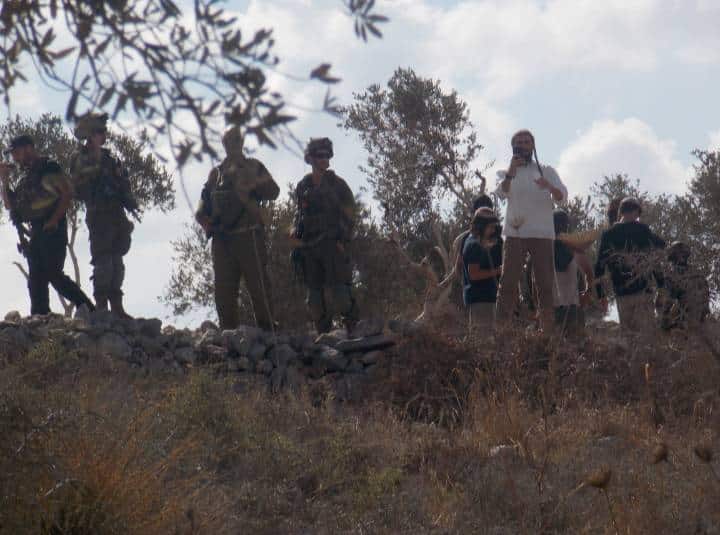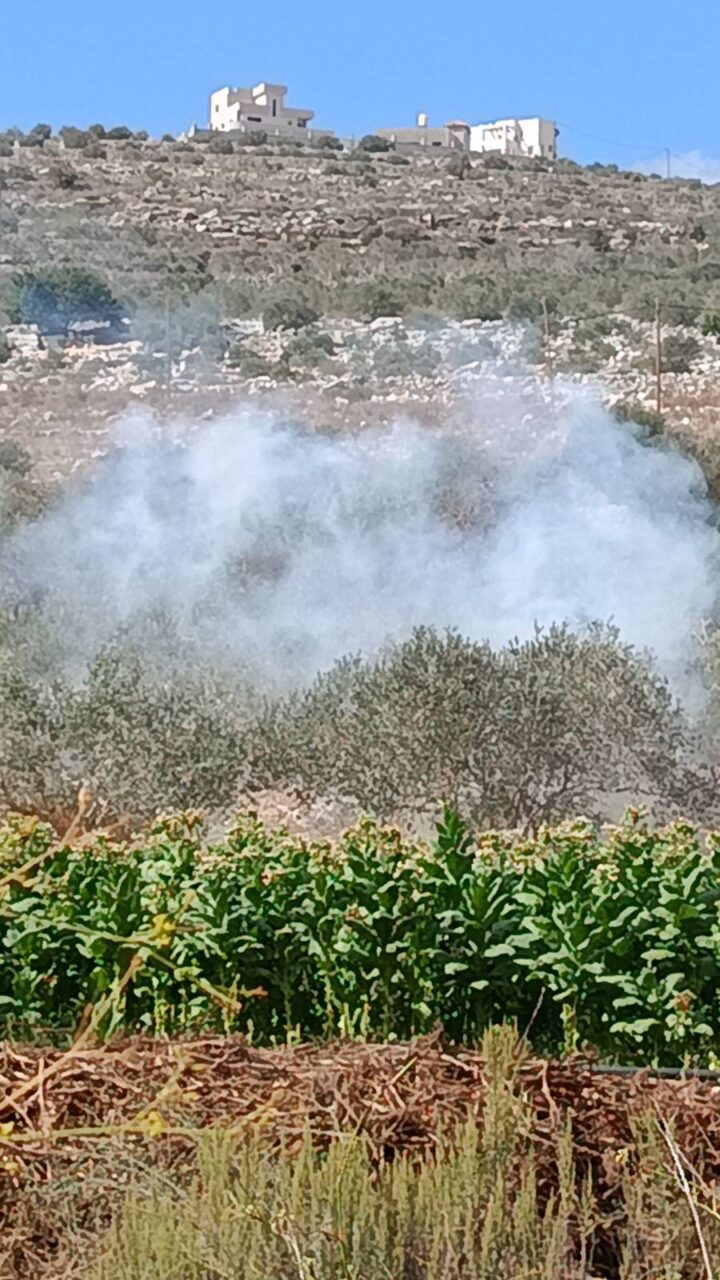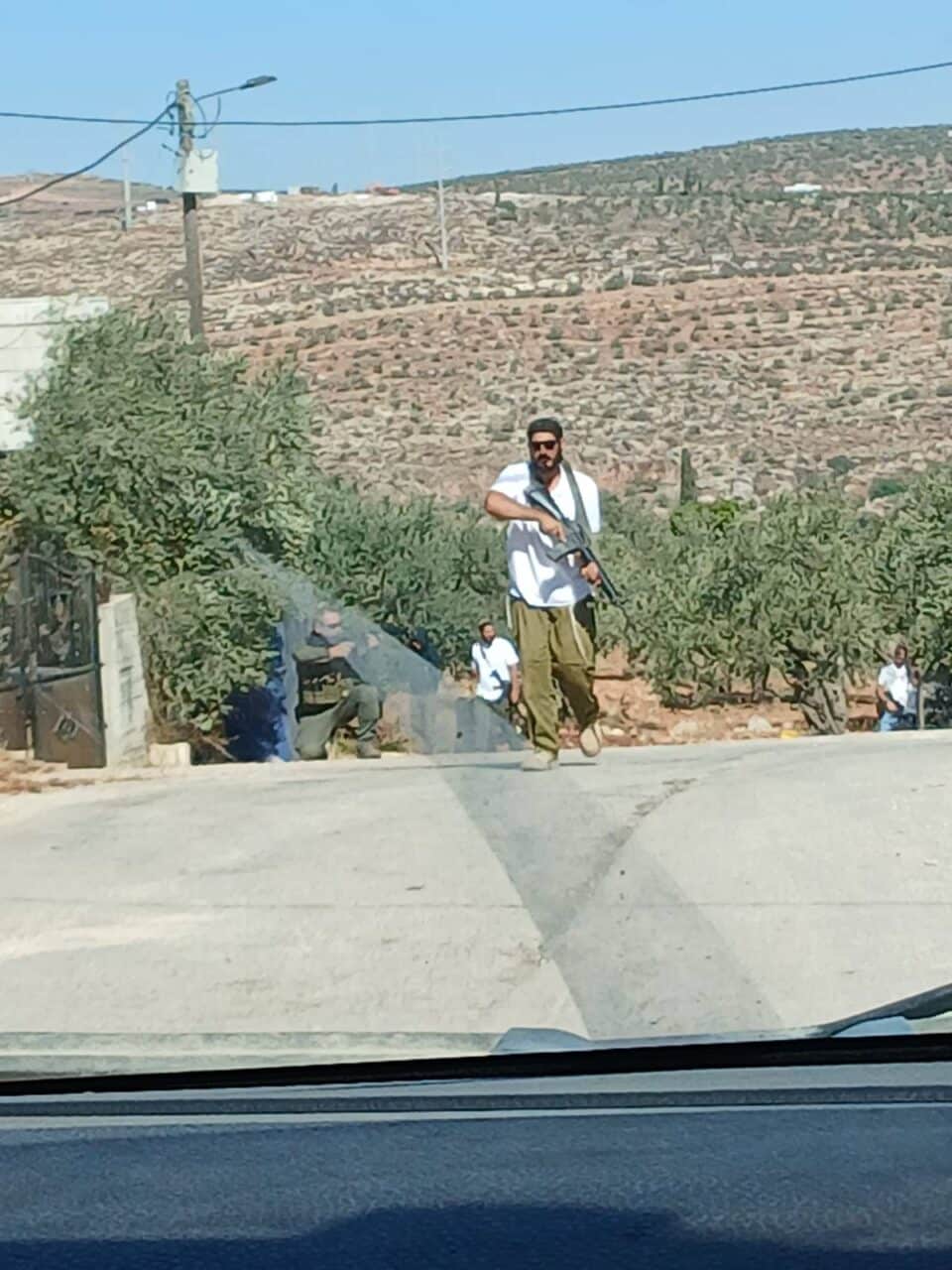-

Testimonies from the West Bank: Jordan Valley and the Olive Harvest
It’s difficult at times to keep track of the time here. The days pass fast and at the same time they are fulfilled with so many things to do from very early time in the morning. I have been a few days away from the Jordan Valley, supporting the olive harvest in different communities. Communities […]
-

Zaytoun 2025: A “flotilla” to break the siege on Palestine’s olives
Wednesday 15 October, Tulkarm — at around 10.15am large convoy of Palestinian men and women from across the West Bank, together with international activists, arrived in Nazla al-Sharqiya, Tulkarm, to support the Zaytoun 2025 olive harvest campaign. Their destination was a Palestinian olive grove that now has an illegal Israeli outpost right next to it. […]
-

Olive Harvest updates: October 13 and 14
October 13 alMughayyer, East RamallahIsraeli citizens cut off some 150 olive trees in the Marj Sia area west of alMughayyer tonight. In recent weeks, the uprooting and cutting off olive trees has happened on a daily basis. Qaryout, South NablusIsraeli citizens set fire in the Batisha area north-west of the village Yanoun, East NablusIsraelis cut […]
Action Alert An Nabi Saleh Apartheid Wall Arrests BDS Bethlehem Bil'in Cast Lead Demonstration Denial of Entry Ethnic Cleansing Farmers Gaza Global Actions Hebron House Demolition International law Israeli Army Jerusalem Live Ammunition Nablus Ni'lin Prisoner Ramallah Rubber-coated steel bullets Settlement Settlers Settler violence Tear-Gas Canister Video
